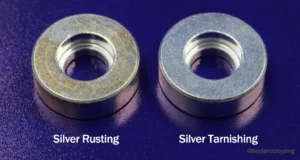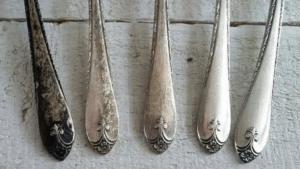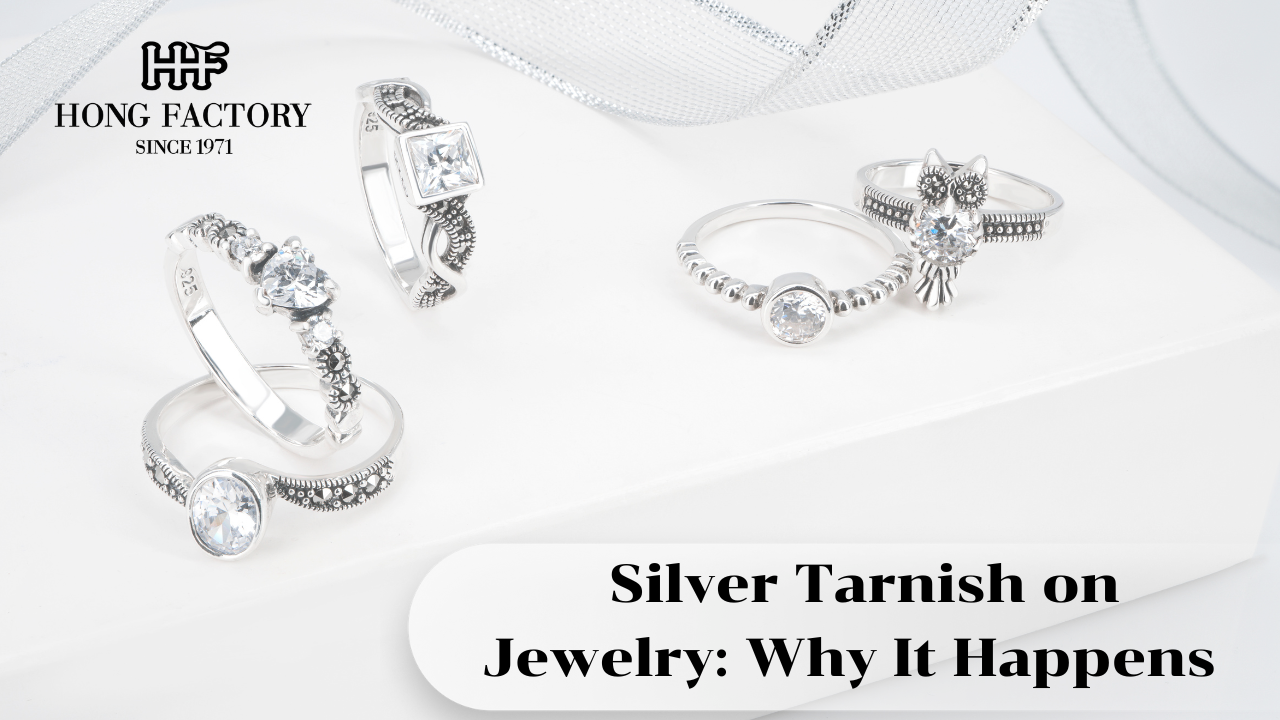Silver jewelry has been admired for centuries for its brilliance, elegance, and timeless charm. However, one common issue faced by silver owners is tarnish. Silver tarnish appears as a dull or dark film on the surface of jewelry, reducing its shine and beauty. Understanding why tarnish happens is essential for proper care and maintenance. This article explores the causes of silver tarnish, its effects, and how to manage it. Is sterling silver real
What is Silver Tarnish?

Tarnish is a surface discoloration that occurs when silver reacts with sulfur compounds and other elements in the environment. Unlike rust, which eats away at metals like iron, tarnish only affects the surface layer of silver. Key features include:
- Black, gray, or yellowish coating
- Caused by chemical reactions, not structural damage
- Reversible with proper cleaning
- Affects appearance but not the actual silver content
This makes tarnish more of a cosmetic problem than a destructive one.
Silver Tarnish on Jewelry: Why It Happens
Silver tarnish perception
When people hear Silver tarnish, they often worry it means their jewelry is damaged or fake. In reality, tarnish is a natural reaction. It happens because:
- Sulfur in the air: Pollutants, volcanic activity, or even everyday items like rubber and wool release sulfur.
- Body chemistry: Sweat, lotions, perfumes, and skin oils speed up tarnishing.
- Environmental conditions: High humidity, salty air near oceans, or industrial pollution increase tarnish rates.
- Storage habits: Leaving jewelry exposed to open air instead of storing it in anti-tarnish cases encourages tarnish buildup.
These everyday factors explain why silver jewelry tarnishes faster for some people than others.
Common Situations That Cause Tarnish
- Wearing silver jewelry while swimming, exposing it to chlorine and salt
- Contact with cosmetics such as hairspray, makeup, and perfume
- Storing jewelry in wooden boxes that release sulfur compounds
- Wearing silver daily in humid or polluted areas
Recognizing these triggers helps minimize tarnish.
Is Tarnish Harmful to Jewelry?
Tarnish is not harmful to the structural integrity of silver. Unlike rust in iron, tarnish only creates a thin film on the surface. With proper cleaning, silver can always regain its brilliance. In fact, some jewelers intentionally use controlled tarnishing to create “antique” or “oxidized” finishes for design purposes.
How to Prevent Silver Tarnish

Simple habits can slow the tarnishing process:
- Store silver jewelry in anti-tarnish cloths or airtight containers
- Avoid direct exposure to perfumes, lotions, and hairspray
- Remove jewelry before swimming or exercising
- Wear jewelry regularly, as gentle friction from skin helps slow tarnish
Prevention is easier than frequent cleaning.
Cleaning Tarnished Silver
If tarnish appears, it can be removed with the right methods:
- Use a silver polishing cloth for light tarnish
- Soak in mild soap and water, then gently clean
- Baking soda paste or commercial silver cleaners for heavier tarnish
- Professional cleaning for valuable or intricate pieces
Always use gentle methods to protect both the silver and gemstones attached.
Pros and Cons of Tarnish
Pros:
- Reversible and removable
- Sometimes used to create antique finishes
Cons:
- Reduces jewelry’s brilliance
- Requires regular maintenance
- May tarnish quickly depending on lifestyle and environment
Silver tarnish on jewelry is a natural process that occurs due to environmental exposure, body chemistry, and storage conditions. While it may dull the beauty of silver pieces, tarnish does not harm the metal itself and can be easily removed. By understanding why tarnish happens and taking preventive steps, silver owners can keep their jewelry shining bright for years to come.
